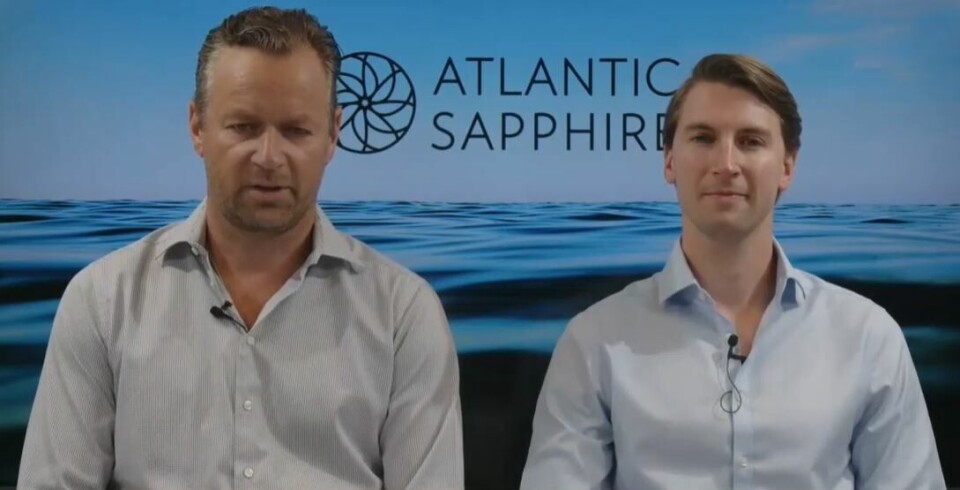
Atlantic Sapphire puts profitability ahead of growth
Significant changes have improved fish welfare and reduced risk, says co-founder Andreassen
Land-based salmon farmer Atlantic Sapphire has made “significant infrastructure improvements” at its Florida “Bluehouse” facility, it said in its annual report this week.
“We were faced with unforeseen setbacks and therefore, we missed our production and financial targets for the year,” chairman and co-founder Johan Andreassen wrote in an introduction to the 190-page report.
“We decided to refocus all our efforts from rapid growth to delivering profitability in our Phase 1 Bluehouse first, fixing issues that have impacted our fish negatively. These efforts have improved fish welfare and reduced operational risk, setting the stage for good biological performance in 2023.”
Ozone system
During the second half of last year, Atlantic Sapphire commissioned a new chiller bank for water cooling, a new ozone system, and additional fish tank lights.
The chiller bank allowed for significantly lower temperatures and increased temperature stability across the Bluehouse, and the ozone system delivered improved water clarity and a reduction of nutrient load.
The additional fish tank lights were installed across all systems to enhance appetite and mitigate early maturation.
Fish die-off
In Q4 2022, Atlantic Sapphire experienced higher-than-normal mortality which negatively impacted production.
A full audit of the Phase 1 Bluehouse infrastructure pinpointed sedimentation and anoxic areas as a leading cause, wrote the company.
“Accordingly, an action plan was executed in which we ‘reset’ and upgraded all biofilter systems, enacted organisational changes, improved protocols, made significant upgrades to equipment and automation, and installed over 100 new camera inspection points in the RAS to proactively identify and prevent potential risks of sludge sedimentation.”
Higher US harvest
Atlantic Sapphire’s harvest volumes in 2022 amounted to 2,253 gutted weight tonnes, less than the 2,374 gwt harvested in 2021. However, the 2021 volume included fish from Atlantic Sapphire’s land-based farm in Denmark, which was badly damaged by fire in September 2021 and has not produced fish since then.
The 2022 harvest volume from the Florida plant was a 465 gwt increase over the 1,788 gwt produced there in 2021.

“Following the challenges faced in Q4 2022, the Group expects to increase the standing biomass in the facility and harvest volumes towards steady state operations in Q3 2023,” wrote Atlantic Sapphire. “In steady state production in Phase 1, Atlantic Sapphire expects to produce the equivalent of 9,500 tons HOG (head-on gutted) of annualised harvest volumes.”
$62.26m operating loss
Atlantic Sapphire made an operating loss of US $62.26 million last year, reduced from a loss of $132.3m in 2021. Revenue was just under $19m (2021: $16.85m).
“The Group believes it has sufficient financing to achieve steady state biomass and generate positive cash flow from operations,” wrote Atlantic Sapphire.
The company has ambitions to produce more than 200,000 gwt of salmon annually at its site at Homestead, Miami-Dade County, but isn’t rushing Phase 2 of its development, which would take production capacity to 25,000 gwt.
“As it relates to US Phase 2 expansion the Group has full discretion over the speed of the construction which allows the Group to better manage liquidity,” it wrote.
Last month the company extended the maturity date of a 2020 credit facility to 21 April 2025 and raised NOK 595m (approximately $55m) through a private placement of 119m new shares. Norwegian salmon farmer Nordlaks invested $10m in the placement.






















































